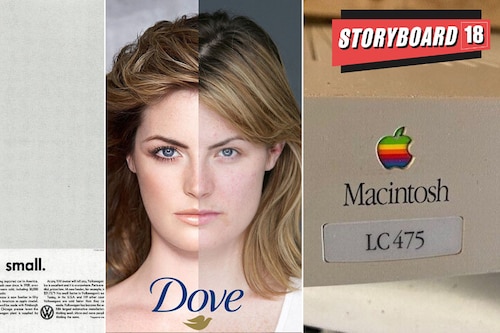Marketing Mocktail: Explaining the purpose behind brand purpose
The biggest trend of the past decade is purpose. But what does it really mean? Here's the only primer you need on how to wield it in marketing and brand building


Note to readers: Storyboard18"s latest column Marketing Mocktail breaks down and explains the big ideas, new disruptions, older concepts and marketing practices that matter in the modern age.
‘Purpose’ has become a buzzword in marketing. Brands are making a beeline for jumping onto the purpose bandwagon. Some have succeeded, while many have ended up with an egg on their face.
‘Purpose’ in English means, “The reason for which something is done or created. Or for which something exists." For a brand, purpose is the raison d’etre for its existence. As Simon Sinek says, “People don’t buy what you do, they buy why you do it." While products solve problems in our lives, purpose beats down the enemies that torment us every day. These enemies are conventions, beliefs, and behaviors in society that brands choose to fight.
When the Volkswagen Beetle was launched in America, it urged people to ‘Think Small’ (for a culture that loved everything big). When Apple introduced the Macintosh, Steve Jobs famously said, “We want to make computers people literate" (rather than making people computer literate). Closer home, TATA Steel proclaimed, ‘We also make steel’ (in addition to contributing to society). The label of brand purpose is new, but the idea has been around for decades.
Today, while many marketers have bought into the idea of brand purpose, it has its share of critics who label it as mumbo jumbo. While the cheerleaders argue that today a successful brand must have a reason for being, not just a reason for selling.
Research by Nielsen shows that 62 percent of young consumers are buying from brands/companies that are taking a stand on social, cultural, environmental, and political issues close to their hearts. Leo Burnett’s study on what they call ‘Humankind Brands’, shows that purpose-driven brands outperform others on all key metrics.
Unilever, who has made it a mandate to make every one of their brands purpose-driven, created the idea of ‘Sustainable Living Brands’ and the company claims that their purpose driven brands grew 69 percent faster and delivered 75 percent of their growth.
It’s not an open and shut case. It depends on ‘when and how’ brands embrace a purpose. There are enough successes and failures. Here are a few guidelines to keep in mind while making a brand purpose driven.
The right timing: Purpose works better for brands that have been around for a while. It is the last mile in a journey - where every brand begins life as ‘unknown’, then it gets ‘known’ (awareness), then ‘known for good things’ (promise), and finally ‘known for things people care about’ (purpose). Short-circuiting this journey and jumping straight to the purpose is like putting the cart before the horse. A brand like Dove propagated the idea of ‘Real Beauty’ after several decades of being known as a ‘moisturizing bar’. Purpose is not a short-term fix, it requires commitment and consistency.
Authenticity and alignment: Never try to be what you’re not. Purpose must be embedded in the DNA of the brand and should ladder up from its rational and emotional benefits. Recently a popular milk additive brand did the #forcedpack initiative to take a stand against parental pressure of career choices being forced on kids, which got slammed by consumers on social media. People saw it as a force fit (pun intended), a gimmick. One of the most authentic brands in this context is Patagonia. This American outdoor clothing brand is a case study in brand purpose. It lives and breathes its purpose - ‘Earth is now our only shareholder’ and as a result ‘We’re in business to save our home planet’. From products, to people, to marketing activities and contribution to saving the planet, Patagonia aligns everything to its purpose. Only if the purpose is authentic, it’s credible. It can inspire and energize both employees and consumers.
Walking the talk: A fatal error many brands commit is making their intended purpose just a clever ad campaign. People are smart enough to see through such posturing. A truly purpose driven brand must embody both, ‘Purpose Say and Purpose Do’. Lifebuoy whose purpose is ‘‘To make 5 billion people across the world feel safe and secure by meeting their personal care, hygiene & health needs". Not only does compelling advertising educate consumers on handwash and personal hygiene, but more importantly conducts regular activities on-ground to promote this, across the world. It’s not just ads, it’s ‘acts’.
If done properly, brand purpose can be a powerful idea to connect with consumers and drive growth. If used only as a marketing gimmick, be prepared for backlash. Like a matchbox brand proclaiming, ‘We enlighten the world.’ Remember, “The consumer isn’t a moron, she’s your wife." (RIP David Ogilvy).
Anand Narasimha is a corporate turned academician with over three decades of experience spanning Brand Marketing, Advertising, Consulting, and Teaching. He writes the column Marketing Mocktail for Storyboard18. Views expressed are personal.
First Published: Mar 21, 2023, 11:57
Subscribe Now